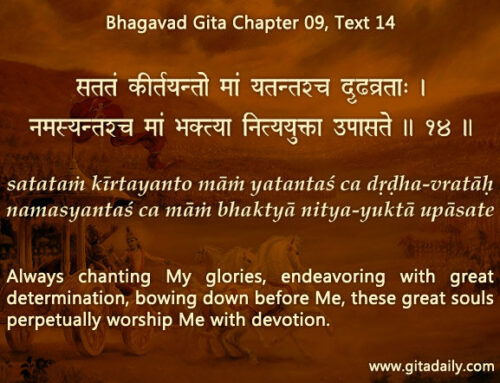The Bhagavad-gita features an intriguing paradox. On one hand, it repeatedly urges seekers to stay unaffected amidst emotions such as pleasure and pain (02.56, 12.19, 13.24, for example). On the other hand, it also repeatedly recommends bhakti-yoga as the best spiritual path (06.47, 11.53 – 11.54, 18.65–18.66, for example). And bhakti-yoga is essentially a path of emotion. So how can one be indifferent to emotions and take up the path of emotion?
The answer lies in comprehending the essential difference between body-based emotions and soul-related emotions. A movie spectator in a theater consumed by the emotions induced by the movie becomes oblivious to the emotions, even the existence, of those sitting nearby. To become sensitized to the authentic emotions of those sitting nearby, the spectator has to come out of the movie’s spell. Otherwise, even if the spectators share some emotions, they will be centered on the movie, not on their real lives.
We are all souls captivated by material enjoyment. Though Krishna sits right next to us in our heart, we can’t even perceive, leave alone relish, his presence. To become sensitized to him, we need to break the spell of materially alluring objects. Otherwise, even if we experience some devotional emotions, they will remain superficial and occasional.
Significantly, bhakti-yoga asks us not to reject the material for the spiritual, but to use the material in the service of the spiritual. So we don’t need to repress material emotions, but we do need to regulate those emotions and not let them become the sole arbiter of our decision to practice bhakti-yoga. Instead, we base our relationship with Krishna on intellectual conviction and determined dedication, as the Gita (09.14: yatantash ca drudha-vratha) indicates. Then gradually all our emotions will become spiritualized and ultimately devotional fulfillment will be ours forever.



How beautifully explained,Prabhu ji. The dedication is permanant and emotion can be momentarily or temporary. Hare Krishna